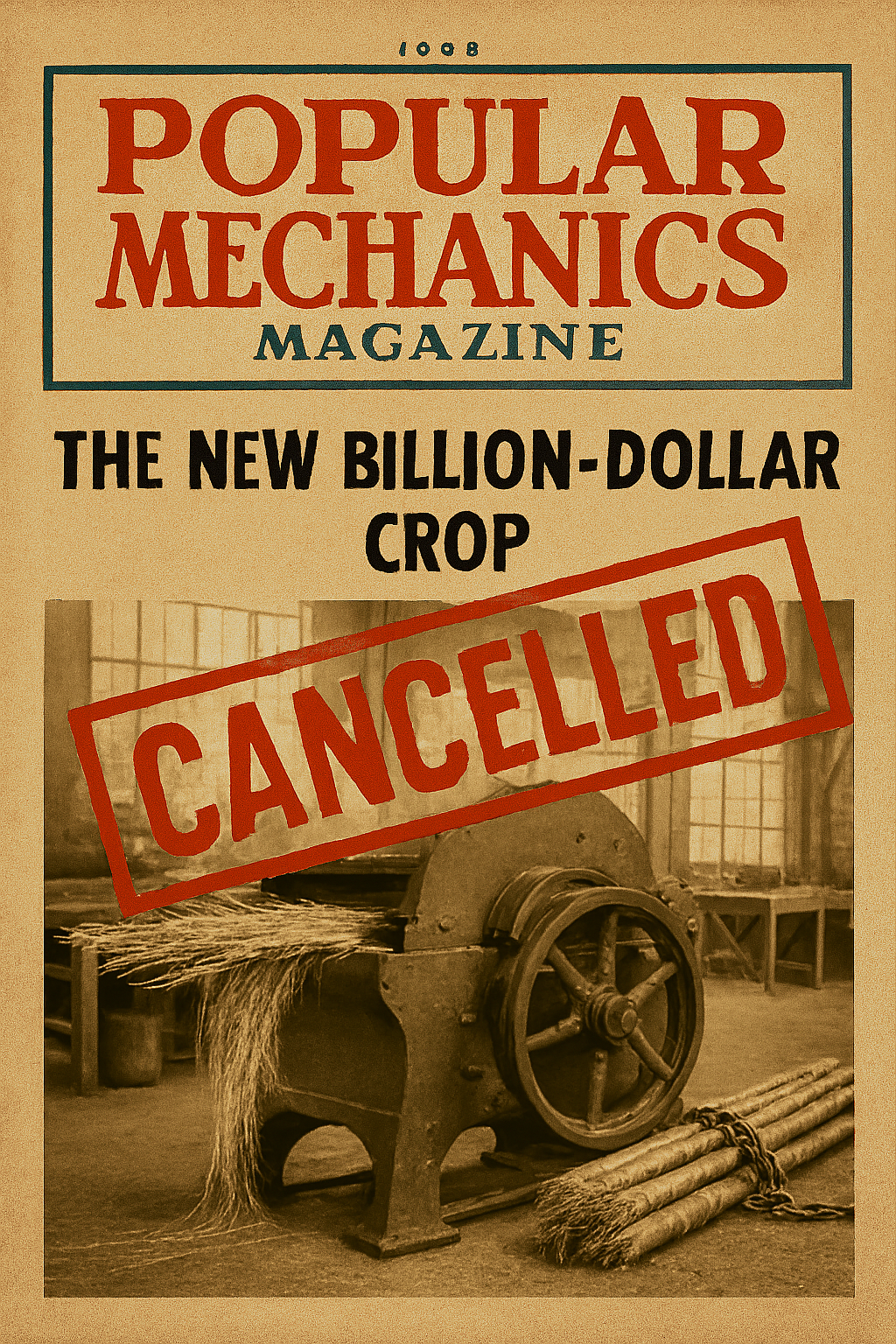1917: The Hemp Decorticator The Industrial Evolution That Never Happened
The original decorticator.
Every schoolchild learns about Eli Whitney’s cotton gin (1793). No one hears about George W. Schlichten’s hemp decorticator (1917). Why? Because one was funded, and the other was buried.
The cotton gin supercharged slavery-era cotton. The hemp decorticator could have supercharged a green industrial revolution — stronger fibers, faster growth, fewer chemicals, no deforestation.
Instead, Schlichten died broke, his machine unfunded, and hemp outlawed.
The machine that was buried by lack of investment.
The Invention
In 1917, Schlichten patented a machine that stripped hemp stalks into usable fiber and hurds at scale (US Patent 1,219,585).
It reduced labor costs by up to 90% compared to hand-processing.
It could process 10 tons of hemp per day in factory trials.
USDA researchers confirmed its efficiency and quietly shelved the findings.
Popular Mechanics later called hemp the “New Billion-Dollar Crop” (1938) — explicitly citing the decorticator as the breakthrough that made hemp competitive with cotton and timber (Archive: Popular Mechanics, 1938).
But by then, Congress had already passed the Marihuana Tax Act (1937), effectively killing hemp farming.
Why It Mattered
If the decorticator had been funded and deployed:
Textiles: Hemp could have outcompeted cotton. Stronger, longer-lasting, no pesticides.
Paper: Hemp could have outcompeted timber; 90-day cycles vs. 20-year tree farms.
Plastics: Hemp hurds were already being tested for bioplastics before DuPont’s nylon patent (Hemphasis).
Fuel: Hemp cellulose was a viable ethanol source decades before corn subsidies.
This wasn’t fringe science. It was a working machine that threatened the foundations of America’s most powerful industries.
Bankers stood between success and failure of hemp market equalizer.
The Receipts They Don’t Teach in School
Patent Filing (1917): Official patent shows the decorticator’s design and potential (Google Patents).
USDA Tests: Early 1920s USDA records mention Schlichten’s trials — but no commercial adoption.
Popular Mechanics (1938): Declared hemp a “Billion-Dollar Crop” thanks to the decorticator — the same year hemp was strangled by taxes (Popular Mechanics Archive).
Investor Silence: Schlichten pitched to industrialists in Chicago and Washington — but no capital ever came.
Why Bury This Truth?
Because the decorticator threatened three monopolies at once:
Cotton: plantation agriculture and pesticide industries.
Timber: Hearst’s pulp empire.
Petrochemicals: DuPont’s nylon patent (filed the same year hemp was outlawed).
Killing the machine killed the movement.
Consumer Takeaway
The hemp decorticator was the industrial revolution America never had.
One machine could have changed the 20th century:
No plastic oceans.
No clear-cut forests.
No pesticide-soaked cotton monopoly.
Instead, the machine was buried, the farmer was forgotten, and petrochemicals filled the vacuum.
Hemp wasn’t unscalable. It was unfunded.
Read the full story in the book.
Evolution Mine: The Industrial Evolution—the blueprint for breaking the petrochemical playbook and building a regenerative economy.
👉 Buy on Amazon





